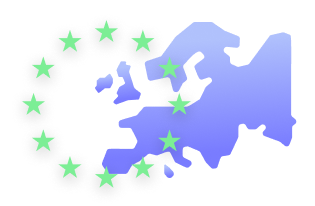Ever since GDPR came into effect on May 25th, 2018, this question has been in the minds of many website owners. GDPR is said to be the biggest change data privacy has seen in the last 20 years. Needless to say, it did take many websites as a storm.
GDPR has a set of rules that applies to websites and organizations, about how the personal data of the subjects should be handled. GDPR laws apply to all organizations that serve the EU citizens to help protect their data.
If you don’t follow these rules and are in non-compliance with GDPR, you can be charged a hefty fine of up to €20 million, or 4% of annual global turnover, whichever is greater.
To avoid paying any fines and to ensure your website is in compliance with GDPR, look into the following areas.
Consent of Users
This being the most important of GDPR rules, it insists on the website taking the consent of the user before the collection or processing of any user data. This change is important as most websites set tracking cookies and collect data from users and use them for targetted advertisements.
GDPR does not allow websites to process any kind of personal data of the users without their permission. Hence, it is important to set up a pop-up box or so when visitors visit your website.
This will make users explicitly give consent for using their data and allowing cookies on the website. Only when users explicitly give their consent for the setting of cookies after knowing what they are set for is the processing of their data to begin.
Doing this will ensure that your website is honoring user rights and is GDPR compliant. This will help you gain the trust of users.
Collection and Use of Data
Check up on the collection of data on your website. If you are collecting data from users, ask yourself these questions. How much of user data do you collect? Why? What is it used for? Is the data being shared? Is it safe? If the answers to these questions make you in any way defy the policies GDPR, then your website sure needs some updating.
In almost all websites out there, online contact forms are available to make it easier for the customers to reach the company. But do you really need all that information? It is better to convey what data is needed and how will it be used to communicate with the user. Also if the data will be kept with the company for a longer period or shared with other sources, should be mentioned in the privacy policy.
Handling the Data Collected
Other than the collection of data, how the website handles the data is also important in the case of GDPR. The data collected should be recorded safely. It should not be shared until necessary and permitted by the user. The main principle being that individual privacy must be protected by protecting their data.
One way of doing this is by deleting the data once it’s of no use to the website. Although most websites do this, it comes under the basic right of the user to be forgotten if they wish to do so.
Making Plugins compliant with GDPR
Your website might be using plugins that may be making use of user data. It is important to review what type of data is collected by the plugins and what happens to it later on. Some plugins even make use of cookies. The list of these cookies must be specified in the privacy policy.
When making your website GDPR compliant it is important to make all the plugins compliant too. It’s the website owners responsibility that the plugins they have used can export, provide access and delete the user data that it has collected. And if the plugin you use does violate GDPR terms, switch to a different one.
Reviewing Third-party Services
Third-party services like Google Analytics, chat service, social media sharing buttons, re-marketing service, etc., are collecting user data and using for tracking and advertising. These services must be reviewed and made to work in compliance with GDPR.
The users must be informed of the usage of them, what they do and asked consent for enabling them as well.
Notifications Regarding Loss and Breach of Data
We can never be so sure of when a hacker might hack into our data. Under GDPR, the websites need to inform the user if there is any kind of loss or breach of data occurs. This step ensures that the users can trust the companies and are not putting their data at risk.
Making Online Payments
If your website is of an e-commerce business, you will obviously be using a payment gateway for financial transactions. While doing a transaction, your website maybe collecting user data before passing it on to the user gateway.
Thus even after the data is passed on, it remains stored on the website. It is important to ensure that this personal data of the user is removed later after a reasonable period.
Email Marketing
GDPR ensures that the users do not receive unsolicited emails. Many websites start sending emails to users regarding their products and stuff just because the users visited the webpage. This process no longer can be carried out as GDPR specifically states that a user needs to opt-in to receive newsletters or promotional emails.
Other than opting in, the website must make sure even those who have subscribed for newsletters or emails are able to opt-out in the future if they wish to do so.
Privacy Policy
Privacy policies can be found in most websites anyway. However, GDPR ensures that all websites specify their working, how they store or track users, how the data is processed and how long the data of the user has stored the website.
The website must also name any partners they sponsor, along with the cookies used on the website. This is an important step as the user has the right to know if they can trust the website or not.
There are many privacy policy generators that will assist you in creating the perfect privacy page for your website. One such tool is CookieYes Privacy Policy Generator.
These were some of the ways to ensure that your website is GDPR compliant. Check out Rights of users in GDPR to know more about it.






